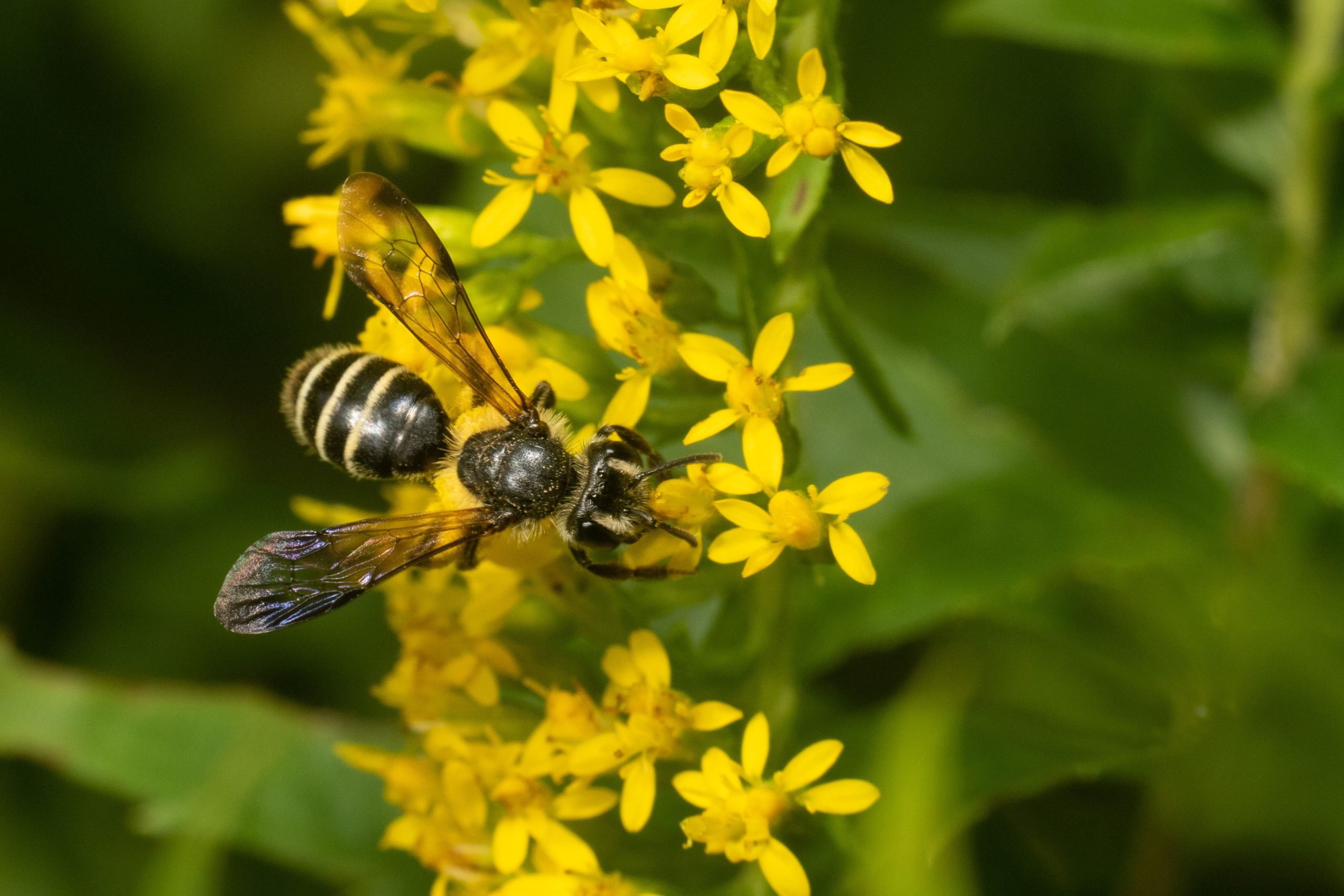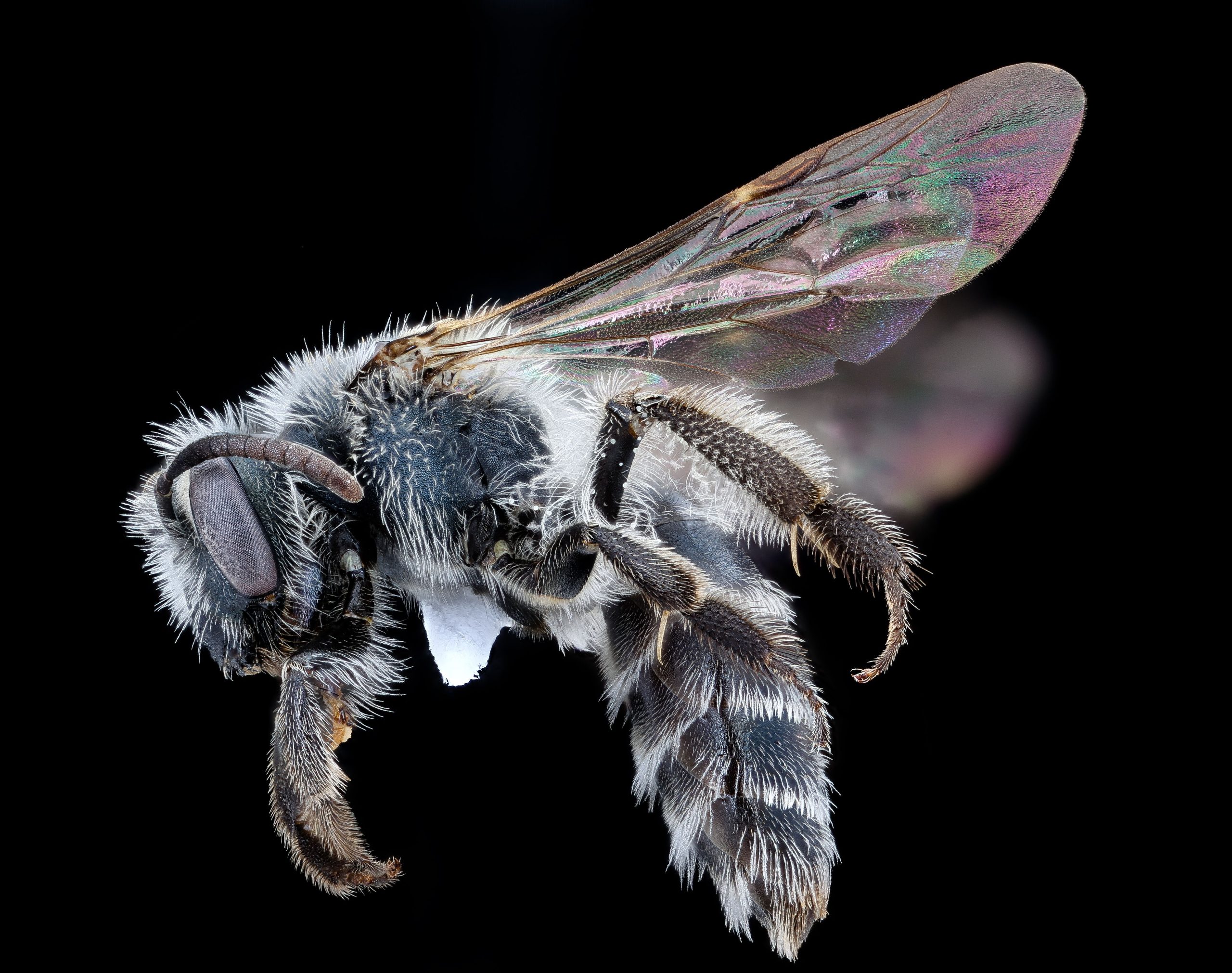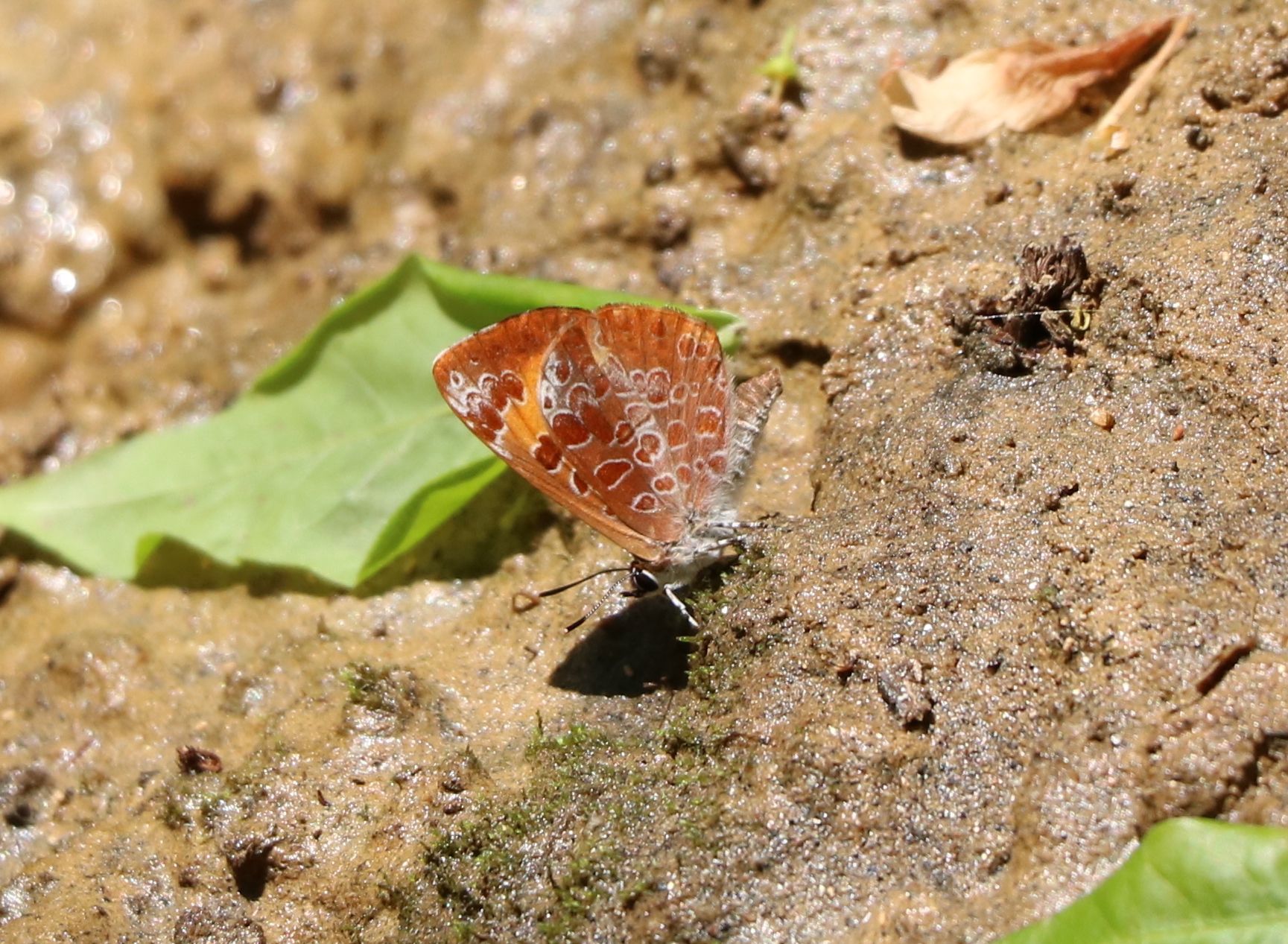Between 2018 and 2019, Sarver Ecological conducted an exhaustive baseline native bee survey in the gardens and extensive natural areas at Mt. Cuba Center.
The survey included passive sampling as well as targeted collecting from over 95 different plant species. We documented 135 species, including 15 species not previously known to occur in Delaware, as well as several significant range extensions. Due to the diversity of plantings at Mt Cuba, as well as the fact that Delaware has generally been under-sampled for bees, this project represents one of the most important bodies of information ever compiled for Delaware’s bees. Highlights included the discovery of what was at the time the only known population of the Alumroot specialist, the Summer Cellophane Bee, Colletes aestivalis in the northeast region. This rare species is of high conservation concern throughout the northeast. We also documented a major range extension of 365 miles (and the first record east of the Appalachian Mts) for the Polemonium specialist Andrena polemonii, the Jacob’s Ladder Miner Bee.
Due to the high density and diversity of native plant species in Mt. Cuba’s naturalistic gardens, as well as the extensive contiguous natural areas (including floodplain habitats of the Red Clay Creek and rare habitats like Piedmont seepage meadows), management and strategic restoration of Mt. Cuba lands has unique potential to host important source populations of a number of rare native bee species. Mt. Cuba also presents an unusual opportunity for long-term longitudinal study and monitoring of native bees at permanent sites.
The full survey report is available here.
Check out the 2021 Washington Post article on the survey here.



